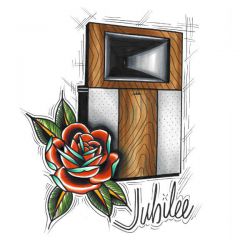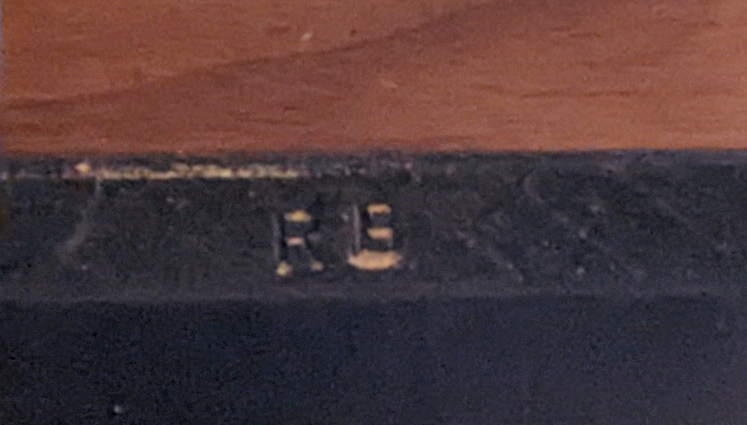-
Posts
734 -
Joined
-
Last visited
-
Days Won
1
Content Type
Forums
Events
Gallery
Everything posted by MMurg
-

Klipsch Palladium P-312W Subwoofer $750, Savannah, GA
MMurg replied to John Chi-town's topic in Alerts!
Oooooo... The one finish of P-312W that I don't have... Why couldn't it be closer? -
If you are going to criticize a speaker, the least you can do is listen to it first. Otherwise, you are just talking out of your behind. Are you so incurious that you won't listen to a speaker unless you plan on purchasing it? Perhaps you might learn the appeal it has for other people if you bothered. But no, you apparently learn all you need to know from spec sheets. Also, how does me suggesting you listen to something before spouting an opinion make me closed-minded?
-
Reading a spec sheet for the frequency response and thinking you know what a speaker is going to sound like is monumentally ignorant. Frequency response is only one of many factors that influence the sound of a speaker. It may not even be the dominant one. Things like sensitivity, directivity, dynamic range, phase response, intermodulation (IM) and harmonic distortion, driver crossover/integration and more play a big role as well. Also, saying you wouldn't even listen to the La Scala if given the chance shows how closed-minded you are. Yes, the La Scala is somewhat of a compromise, a speaker of tradeoffs. The reason the La Scala response starts to drop off after about 50 Hz is that it has horn-loaded bass. The low frequency cutoff of a horn is related to the size of the horn. The La Scala is about as small as you can practically make a speaker with horn-loaded bass with a somewhat reasonable cutoff. However, what you gain with horn-loaded bass is vastly higher bass sensitivity and hence much higher dynamic range and much lower distortion. The IM distortion can be orders of magnitude lower than that of bass reflex or acoustic suspension speakers. You also get better controlled directivity down to the Schroeder frequency where room modes take over. That high dynamic range and low distortion is the "energy" that @KT88 was trying to describe. It hard to describe to someone if you've never heard a speaker with horn-loaded bass. Maybe try listening to them before forming an opinion. Like any other speaker, the La Scala is not something everyone will like. However, it's not a "flaw" that its bass cuts off where it does. It was a conscious design compromise to have horn-loaded bass in that cabinet size.
-

Center speaker to go with a pair of KLF-10's, and a new receiver question.
MMurg replied to Motor7's topic in Home Theater
The KLF-C7 is the matching center speaker for the Legend series. I did a direct comparison of those two centers (plus a Heresy II) with KLF-30 mains. I posted it to the Klipsch Owners Facebook group a year or two ago. Here's what I wrote: "Now that I finally have KLF-C7 I decided to do a comparison between that and the center I’ve used for years with my KLF-30, a single Heresy II. I also threw in the KSP-C6 that I got with the KSP-S6 I purchased a few weeks ago to see how it fairs. Since I redid the family room system with Palladiums, my KLF-30 have been moved into a two-channel system in the less used living room. I’m driving them with an older pre-HDMI Denon surround receiver. So, I temporarily hooked up the center speaker connection and moved the KLF-30 slight further apart to fit in a center. All speakers except the KSP-C6 have Crites titanium tweeter diaphragms installed. I only have an old “universal” DVD player hooked up there, so I had to use DVD movies and multi-channel DVD-A/SACD discs for the test. Since I don’t have the space or equipment to set up rapid switching between them, I determined and recorded the proper level for each center before all the testing. That way I quickly reset the proper level when switching them. I know this is not a scientific test but my impressions of each are as follows: Heresy II: I almost didn’t bother getting this out of the box to test since I’ve used it as the center for the KLF-30 since I got them and been very satisfied. Since both the KLF-30 and Heresy cross from horns to cones at nearly the same frequency (825 Hz, 850 Hz) the low distortion through the mid-range comes through on each. To my ear, this is best match of the three. They work very seamlessly together particularly in the vocals. KSP-C6: Using this as center immediately reminded me of the short time that I had an Academy as a center with my Forte. I did not find those two to be a good sonic match. The Academy was a good speaker but sounded more like KG series to me. It’s the same with the KSP-C6 in this case. While it’s a good speaker it is own right, it is not a good sonic match for the KLF-30. I found myself constantly distracted by the mismatch. One interesting thing about this speaker is that while it has a square horn mouth it actually has a “slot-horn” design (parallel vertical walls that then widen out more than the horizontal walls) giving it a 90° horizontal x 60° vertical coverage pattern, which is the opposite of the KLF-C7. Because of this I expected it to have decent off-axis performance, but I was wrong. I found that the sound quality dropped pretty rapidly as you moved off-axis. Since I now have the KLF-C7 for the system I’m putting together for my son, I’ll likely end up selling this one at some point. (Edit: On second thought, this would probably be a good match for my stand mounted AW-650. If my son wants to do outdoor movie night with his friends again, I can make it a 5-channel setup using the AW-650, the KSP-C6, and a pair of KSP-S6 on stools. 😊 ) KLF-C7: I was very skeptical of this being a good match with the 3-way Legend series towers even though it’s the center made for the Legend series. My experience of mixing 2-way and 3-way Klipsch speakers in the front stage has not been good. However, the KLF-C7 really surprised me. This is a really good center speaker and a good match for the KLF-30. While it is missing some of the mid-range richness of the Heresy II, I found the match across the front to be very good and almost never distracting. Also, even with the horn coverage pattern being 90° vertical x 60° horizontal the off-axis performance was quite good for a horizontal MTM speaker. It’s the first 2-way center that I could likely live with. I’m really glad I finally snagged one of these." -
I used original Forte as my mains for about 15 years. I also became pretty familiar with the sound of the Forte II at the local dealer (where I used to hang out quite a bit). I never found either of them fatiguing. Perhaps the crossover caps or maybe some driver diaphragms need replacing. As far as a center speaker goes, I wouldn't use a Reference or RP center. They will not be a good sonic match. A third Forte would be the ideal match. After that, I'd recommend a smaller 3-way Klipsch speaker like a Quartet or Heresy (II or higher). I used a Heresy II with my original Forte and found it to be a really good match. If you must use a horizontal center speaker, the KLF-C7 was the closest matching center to the 3-way mains that I've owned. It's not a perfect but it will work. I imagine the very similar KV-4 would also work decently. Finally, the Academy is OK. I personally thought the Academy sounded more like the kg3/kg4 but some people like it with 3-way mains.
-
Pretty sure it is a K-510 horn with a K-691 compression driver. The MCL-905 is almost certainly a cosmetically dressed up KPT-904-M cinema speaker.
-
Lumber core is a type of plywood where there is a thick "core" of lumber sandwiched between one or more outer plys. The '81 Belle that I'm using as a center speaker is also made of lumber core panels. The pic below is the back edge of bass bin top panel. In this case there is only one ply on either side of the lumber core. It's a painted edge and I've cropped this out a larger pic (since I don't feel like moving it to get a better closeup), so it may be hard to see. My original Forte were the same. I guess Klipsch used both types of plywood during that period. Maybe price and availability drove what was used at any given time. If any Klipsch employees from the period have an insight, that would be appreciated. The small rear spacing on that sheet was just a minimum recommendation, basically a warning not to put them up against the wall. PWK would likely disagree with you about the toe in: http://assets.klipsch.com/files/Dope_750801_v15n2.pdf. If you have imaging problems when toeing in, usually there are reflecting surfaces between the speakers causing it.
-
My pair of original Forte were from the first batch the dealer ever got when they were introduced. The instruction sheet included with the speakers (below) said cabinets were made of lumber core panels.
-
Unfortunately, I can't make it this year. I hope everyone has a great time. I'll just have to console myself with Heritage Jubilee listening sessions in my living room. 😊
-
From https://www.klipschmuseum.org/blog/2023/2/14/pwk-birthday-bash-2023 Friday, March 10 – Listening Sessions at the Klipsch Lab featuring JUBILEES! Max 10-12 people per session! Session times: 10:00 AM-12:00 PM, 1:00 PM – 3:00 PM, and 3:00 PM – 5:00 PM MUST pre-register for the Listening Sessions at the Lab! To register: email beckie@klipschmuseum.org (Include your name and session time preferred.) (Free Event)
-
The original Forte had a fantastic reputation. There were the first Klipsch model that I owned where I was "satisfied" with the sound (after trading up from kg2 and kg4). They were my main speakers for 15 years. Julian Hirsch's review in the July 1896 issue of Stereo Review magazine was wildly positive (https://www.americanradiohistory.com/Archive-HiFI-Stereo/80s/HiFi-Stereo-Review-1986-07.pdf, page 48). Here's a quote: "It is not easy to be dispassionate about the Klipsch Forte. Its distortion and sensitivity measurements are so outstanding that comparison with most other speakers is impossible. In addition, these speakers just plain sound so good that we will hate to pack them up and send them back to Hope, Arkansas! In absolute terms, and especially at its price, the Forte would be hard to match, let alone surpass." I find the "other brand" titanium tweeter diaphragms to be an improvement over the stock phenolic ones. I replaced all the tweeters in my KLF-20/30 with them (originals were poly). Whether the crossovers are an improvement will depend on if the capacitors in the originals were going bad. This is sometimes a controversial topic. However, neither replacement should be detrimental in any way.
-
I'm pretty sure the earliest production years of the kg2/kg4 had the logo-printed radiators. They probably discontinued that to trim production costs, as doing that printing requires material and labor costs and doesn't add to the appearance once the speakers are in place. My original pair of kg2 and kg4 had printed radiators. I traded those in. I recently purchased a used pair of kg2 for nostalgia. This pair is a later production year and does not have printed radiators.
-

Klipsch&McLaren, The Legends Series, I like it!
MMurg replied to KT88's topic in 2-Channel Home Audio
-

Klipsch Heritage Jubilee vs. Underground Jubilee Upgrade
MMurg replied to diamonddelts's topic in 2-Channel Home Audio
Yes, that's true. However, there is a about 20 dB gain difference across the frequency range of the HF settings from its lowest to highest points. it's just implemented as both cuts and boosts. -

Klipsch Heritage Jubilee vs. Underground Jubilee Upgrade
MMurg replied to diamonddelts's topic in 2-Channel Home Audio
Yes, the driver needs EQ for flat response on the K-402, like most any driver on a constant directivity horn. That amount of gain is only required up near 20 kHz. I mentioned the Chris A post earlier in this thread where PEQ settings can be found that would be a good starting point. I agree. I don't see the point of going to the Axi2050 and then limiting its use to a midrange driver. It's a better driver than both of the compression drivers on the 3-way UG Jubilee. -

"Frequency Response" publication from around the late '80s
MMurg replied to MMurg's topic in General Klipsch Info
The "Wernertron" issue. Frequency Response - Wernertron.pdf -

"Frequency Response" publication from around the late '80s
MMurg replied to MMurg's topic in General Klipsch Info
The "Sound for Movies" issue. Frequency Response - Sound for Movies.pdf -

"Frequency Response" publication from around the late '80s
MMurg replied to MMurg's topic in General Klipsch Info
The full "Passive Radiators" issue. Frequency Response - Passive Radiators.pdf -
The recent Dope from Hope publication project reminded me of the newsletter-type publication that Klipsch did around the late '80s call "Frequency Response". I have three of them, which I just scanned to PDFs and will attach them below. I'll post a cover image of one with this first post. I don't remember exactly when these were published or how many total issues there were, but I would like to know. If you have issues that I don't have, I'd like to get a copy, digital or otherwise. If you have any more information about these publications, please post it to this discussion. Thanks.
-
Reavon is the one out of France.
-
The Reavon players were made to fill the hole in the market left by Oppo exiting: https://reavon.com/. I've been considering getting one since my Xbox One S is starting to get a little squirrely when trying to play some 4K discs.
-
I own something similar though I can't take any credit for its creation. I found it for sale on eBay back in 2005. The seller took a pair of KLF-20, disassembled them, had custom cabinets of the same internal volume with cherry veneer made, and installed into those all the original drivers, gaskets, screws, terminals, crossovers, ports, grill cloth, Klipsch emblems, and speaker grill fasteners. He kept one for his use and put the other for sale on eBay to recover some of the project costs. Luckily, he had forgotten to put a “buy it now” price on it and no one had been able to buy it yet. I immediately contacted the seller and asked him if he would consider doing a “buy it now” and if so at what price. He quoted me a price and I snatched it up. 🙂
-
Don't place a tower speaker like a KLF-20 on its side. First, it's designed to couple to the floor on the bottom. The bass response will be off. Second, the 90° × 60° coverage pattern of the horns will no longer be wide horizontally and narrower vertically. Therefore, you will get narrower listening area coverage and more undesirable floor/ceiling reflections.
-
-







.thumb.jpg.5bf181246aff19182b09cf0b8ed33f61.jpg)
.thumb.png.2b8f2a965654e9a2bd76ae8940719c3f.png)
.thumb.jpg.7122c0641ef2d7e0049c2ac2a2701adc.jpg)


